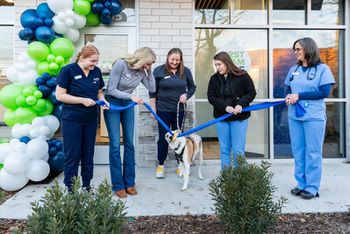
Handle hazardous drugs? Read this
Maybe your state doesn’t enforce hazardous drug compounding rules today, but you never know when that might change. And the rules of USP <800> protect your veterinary hospital’s patients and staff as well as the environment. Learn more and consider whether your protocols and areas could use a redesign.
At least in my neck of the woods, there’s been a ton of talk in the veterinary industry over the past year and a half about something called
Most veterinarians and nursing staff are already familiar with the USP (United States Pharmacopeia). Every year the USP publishes drug standards for human and animal drugs. The USP has no role in enforcing the standards, though; enforcement is the responsibility of the U.S. Food and Drug Administration along with other government bodies. For the veterinary industry, the burden of enforcement falls on boards of pharmacy or state veterinary boards, and the AVMA stays up-to-date on the topic at
Great—so why should veterinarians in the trenches care? The USP’s mission is to improve global health through public standards and programs that help ensure the quality, safety and benefit of medicine and foods. To provide guidance on applying best practices for compounding, USP issued three applicable chapters: <795>, <797> and <800>. Chapters <795> and <797> provide guidance on applying best practices for sterile and nonsterile compounding, and <800> focuses on handling of hazardous drugs to promote safety for patients, employees and the environment. I bet you thought that USP <800> was all you had to pay attention to? Nope. Chapters <795> and <797> work hand in hand with <800>.
Just like the USP rules, veterinary hospital design also looks to promote best practices for the health and safety among patients, workers and the environment. Following the USP guidelines as described in these chapters can help achieve that. One way to achieve this is a three-team approach—with representatives from your medical operations team, your pharmaceutical handling team and your design team:
• Operations will involve protocols for procedures, ongoing training and quality control measures.
• Pharmacy will look at the selection of drugs to be compounded and the ways they’re received and stored as well as required administration methods.
• Design will consider the creation of proper areas to receive, store, prepare and administer these drugs.
Here’s what these teams will consider:
• Nonsterile preparation in <795> is the least complicated for facility design. Nonsterile compounding doesn’t need to be carried out in a cleanroom environment—it just needs to comply with guidelines to avoid contamination. Areas used for sterile preparations must be separated and distinct from nonsterile compounding areas. Typically, drugs that fall under this standard can be handled in a separate area in the main pharmacy with enough space dedicated for the layout of equipment and in-process materials needed to finish preparations.
• Sterile preparations in <797> for compounding apply to both hazardous and nonhazardous drugs. Proper receiving, storage and handling are defined. Chapter <797> currently categorizes drugs into low, medium and high contamination risk levels, and requirements are different for each. This also defines the facility and environmental controls required.
• Hazardous drugs rules in <800> were officially set Dec. 1, 2019, but current appeals of <795> and <797> may affect that. (For more information, see
So, if you’re checking up on your dream facility’s compliance, where do you start?
First, identify your teams. A good choice for your operations team is the hospital owner, practice manager or medical director. Your pharmacy lead could be a veterinary technician who focuses on pharmacy in conjunction with the person in charge of ordering drugs. For design, just make sure your designer has a good understanding of the three USP chapters.
Second, if you’re in charge of the build, you need to read all three of these chapters. I cannot tell you how many times I’ve started to talk to a hospital owner or manager about complying with these regulations and find out they haven’t read them. They’re not a fun read, but they’re critically important to your success in creating a healthy and safe environment.
Third, ask your operations and pharmacy teams to work together to fill out a risk assessment that lists the hazardous drugs you use, how they’re received, stored and administered, and whether they’re used according to the manufacturer’s instructions as well as the “Beyond-Use Dates.” Can’t find the drug on the National Institute for Occupational Safety and Health (NIOSH) list at
When you’re finished, the team will need to review the answers to figure out ways to minimize risk, but receiving hazardous drugs in their final form is one way that also minimizes the cost associated with facility upgrades for proper handling and containment.
Lastly, work with your design team to determine what facility changes will be required based on the results of the risk assessment. A site visit by your architect and mechanical engineer is a good start. From a facilities standpoint, at minimum, a veterinary hospital that compounds low-risk level, Group 1 hazardous drugs will need to have a C-PEC (Containment Primary Engineering Control) such as a Biological Safety Cabinet placed inside a C-SEC (Containment Secondary Engineering Control)—in other words, a dedicated room. The regulations will help guide your design team on exactly how these containment areas need to be designed for veterinary hospitals.
For a great starting place on USP <800>, check out the frequently asked questions at
Vicki Pollard is a certified veterinary technician and veterinary architect at Animal Arts in Boulder, Colorado. She also speaks at the Veterinary Economics Hospital Design Conference.
Newsletter
From exam room tips to practice management insights, get trusted veterinary news delivered straight to your inbox—subscribe to dvm360.



